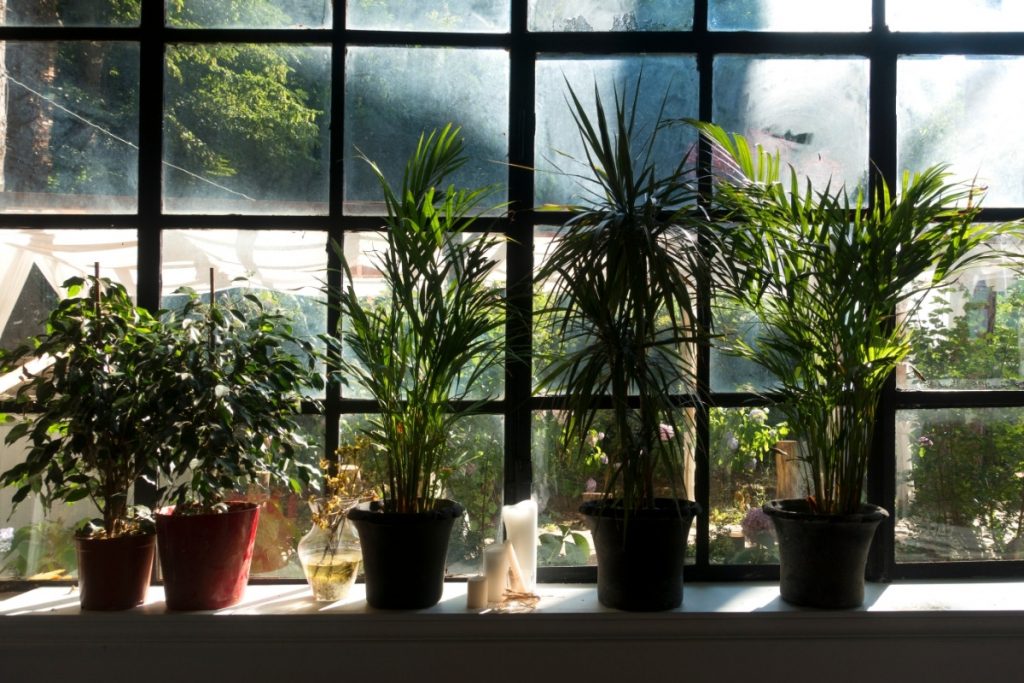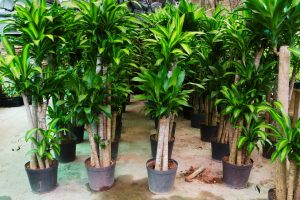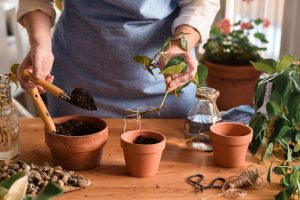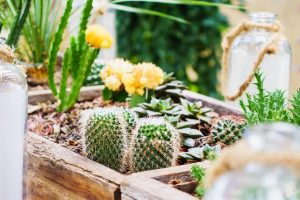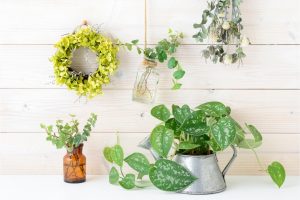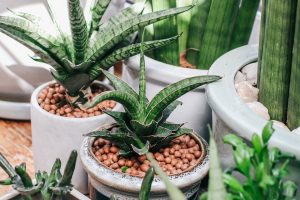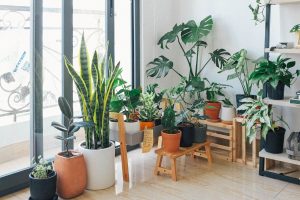Table of Contents
If you’re looking for some north-facing window plants, you’ve come to the right place! In this blog post, we will share with you 25 beautiful plants that thrive in this type of environment. Not only will we provide you with a list of plants, but we will also give you a little bit of information on each one. So whether you are a beginner or an experienced gardener, you will find something that interests you!
Choosing plants for a north-facing window can be challenging for indoor gardeners. The reason for this is that the north side of a building does not get as much sunlight as the other sides. This can make it difficult for plants to grow and thrive. However, with a little bit of research and some trial and error, you should be able to find plants that will do well in this type of environment.
One of the best things about north-facing window plants is that they come in a variety of shapes and sizes. There are small plants that can fit on a windowsill, as well as large plants that will take up most of the space. So whether you are looking for something to add some color to your home or you need something that can grow into a tree, north-facing windows have something for everyone.
The north side of a house is typically the coldest part of it because there isn’t as much heat coming in from outside sources like sunlight or fireplaces. This means that north-facing windows need special care when choosing plants to plant next to them! If you are planting a large plant next to a north-facing window, make sure that it can tolerate low temperatures. And if you are planting a small plant on a windowsill, choose one that doesn’t need too much sunlight or heat to thrive.
Now that we have given you some tips on choosing plants for north-facing windows, let’s take a look at some of our favorites! This list covers some excellent plants that are suitable for the lower light conditions of a north-facing room.
1.
Golden Pothos (Epipremnum aureum)

Pothos is a trailing plant with green leaves and yellow variegation. It’s perfect for north-facing windows because it can tolerate low light conditions but still grows well when exposed to some sunlight. You’ll need to water this one once per week in the winter months (or less frequently depending on your climate) and three times during the summer months.
Pothos is a great choice for a north-facing window plant because it is hardy and can tolerate low light conditions. As a houseplant, the hardy nature of the Pothos makes it a great low-maintenance choice that can thrive in almost any set of conditions.
If you choose to plant a Golden Pothos in your north-facing window, be sure to watch for fungal leaf spots and botrytis. Both of these diseases can cause significant damage to the plant. Additionally, the roots may rot in poorly drained soils, so make sure to take this into account when choosing a pot or planter. If you notice scale, mealy bugs, or mites on your plant, be sure to treat them with an appropriate insecticide.
- Sun: Part shade
- Water: Medium
- Maintenance: Low
2.
Swiss Cheese Plant (Monstera Deliciosa)

Swiss Cheese Plant has large, heart-shaped leaves that are perfect for north-facing windows. This plant is easy to grow and maintain if you have the right conditions: bright indirect light with consistent moisture levels in soil (water once per week during summer months). The leaves will turn yellow when exposed to too much sunlight or dry out from lack of water; however, they can recover quickly if these issues are remedied quickly.
If you are growing a Swiss Cheese Plant in your north-facing window, be sure to watch for aphids, mealybugs, thrips, scale, or spider mites. These pests can cause significant damage to the plant and should be treated with an appropriate insecticide if they are present.
- Sun: Part shade
- Water: Medium
- Maintenance: Medium
3.
Spider Plant (Chlorophytum Comosum)

Chlorophytum comosum is a hardy plant that can tolerate low light conditions. It is native to South Africa and has linear leaves that are green or striped white. This plant is easy to grow and does not require a lot of maintenance. Chlorophytum comosum is a great choice for a north-facing window plant.
If you are growing a Spider Plant, be sure to watch for pests like whiteflies, spider mites, scales, and aphids. These pests can cause significant damage to the plant and should be treated with an appropriate insecticide if they are present.
If you are having trouble with your Spider Plant, check to see if the tips of the leaves are turning brown. This can be a sign that you are not watering the plant enough, the humidity is too low, or there are too many salts and excess fluorides in the water. If you notice any of these problems, take steps to remedy them.
- Sun: Part shade to full shade
- Water: Medium
- Maintenance: Low
4.
Sansevieria Trifasciata (Snake Plant)

Sansevieria Trifasciata is a hardy houseplant that can tolerate low light conditions. It has stiff, dark green leaves with yellow stripes that grow up to three feet tall when mature (the plant itself only reaches two feet). This plant is easy to grow and does not require much maintenance. The Sansevieria Trifasciata is a great choice for north-facing windows because it can tolerate low light conditions but still grows well when exposed to sunlight.
If you are growing a Snake Plant, overwatering often causes root rot. be sure to watch for mealybugs and spider mites. These pests can cause significant damage to the plant and should be treated with an appropriate insecticide if they are present.
- Sun: Part shade
- Water: Medium
- Maintenance: Low
5.
Spathiphyllum (Peace Lily)

Spathiphyllum is a hardy houseplant that can tolerate low light conditions. It has broad, dark green leaves with white spathes (flowers). This plant is easy to grow and does not require much maintenance. The Spathiphyllum is a great choice for north-facing windows because it can tolerate low light conditions. Do not place in direct sun. When grown indoors, Spathiphyllum has very low fertility needs. Apply fertilizer at one-quarter of the recommended strength.
If you are growing a Spathiphyllum, be sure to watch for pests like mealybugs and scale. These pests can cause significant damage to the plant and should be treated with an appropriate insecticide if they are present.
- Sun: Part shade to full shade
- Water: Medium
- Maintenance: Low
6.
Phalaenopsis (Moth Orchid)

Phalaenopsis orchids are some of the easiest orchids to grow in the home. They are available widely and inexpensively. Phalaenopsis orchids do well in low light conditions and can be placed in north-facing windows. Phalaenopsis orchids are native to southern China, Taiwan, Southeast Asia, and New Guinea. They are epiphytic, which means that they grow on trees or other plants. Phalaenopsis orchids have long and narrow leaves with colorful flowers.
Phalaenopsis orchids might develop some problems like insect infestation, leaf rot, and other diseases. If you notice any of these problems, take steps to remedy them. overwatering often causes root rot.
There are a lot of people who don’t know how to water their plants properly because they incorrectly think they need to make them wetter. It’s important for north-facing window plants not to be overwatered because it can lead them to have more fungus infections. When you increase the amount of moisture in your north-facing window plant’s surroundings by watering often over some time you tend to see an increase in fungus infestation issues.
- Sun: Part shade
- Water: Medium
- Maintenance: Low
7.
Aglaonema commutatum (Philippine evergreen)

Aglaonema commutatum is a tropical evergreen perennial plant that is native to the Philippines. It prefers diffused sun or good indirect light. Avoid placing in direct sun. Use a well-drained, peaty potting mixture. Do not allow soils to dry out between waterings. Fertilize monthly during the growing season with a balanced houseplant fertilizer diluted by half.
Aphids, mealybugs, spider mites, or scale can cause significant damage to the plant and should be treated with an appropriate insecticide if they are present. Rots may occur if plants are over-watered. Leaves may brown up if plants are grown in very dry air or placed in a drafty location.
- Sun: Part shade to full shade
- Water: Medium
- Maintenance: Low
8.
Calathea makoyana (Peacock plant)

Calathea makoyana, commonly called peacock plant or cathedral windows is a tropical perennial plant that is native to eastern Brazil. It is an evergreen plant that has dark green leaves with a white underside. The leaves are marked with purple-brown stripes and have a velvety texture. The flowers are small and inconspicuous.
This plant does well in medium light and should be placed in north-facing windows. Keep the soils moist but not wet. Fertilize every month with a balanced houseplant fertilizer diluted by half.
Aphids, scale, and spider mites can cause significant damage to the plant and should be treated with an appropriate insecticide if they are present. Leaves may brown up if plants are grown in very dry air or placed in a drafty location.
- Sun: Part shade to full shade
- Water: Medium
- Maintenance: Medium
9.
Aspidistra elatior (cast-iron plant)

Aspidistra elatior, commonly called cast iron plant, is native to China and Japan. It is a low-maintenance plant that does well in low light conditions and can be placed in north-facing windows. Arching, lanceolate, glossy dark green leaves rise directly from its fleshy rootstock on long stems.
Best sited in bright indirect light, but tolerates full shade. Avoid direct sun. Water regularly from spring to fall, but reduce watering in winter as the plant rests. Do not allow soils to dry out between waterings. Fertilize monthly during the growing season with a balanced houseplant fertilizer diluted by half.
Some common problems that you may encounter with Aspidistra elatior are mites and scale. If you notice either of these problems, take steps to remedy them. Overwatering often causes root rot. Sun can bleach the leaves of this plant if it is in direct sunlight for an extended period.
- Sun: Part shade to full shade
- Water: Medium
- Maintenance: Low
10.
Neoregelia carolinae (blushing bromeliad)

Neoregelia carolinae, commonly called blushing bromeliad, is an epiphytic evergreen perennial that is native to tropical rain forests in southeastern Brazil. It is a low-maintenance plant that does well in low light conditions and can be placed in north-facing windows. It has dark green leaves with a white underside that are marked with red or pink stripes. The flowers are small and inconspicuous.
Neoregelia carolinae will survive into the shade. Plants should be regularly watered but not overwatered. Filtered light is best. Fertilize every month with a balanced houseplant fertilizer diluted by half during the growing season.
Aphids, thrips, and scales can cause significant damage to the plant and should be treated with an appropriate insecticide if they are present. Rot may develop if the soil is kept too moist.
- Sun: Part shade to full shade
- Water: Medium
- Maintenance: Low
11.
Chamaedorea elegans (parlor palm)

Chamaedorea elegans, commonly called parlor palm or neanthe bella palm, is a small, compact, usually single-trunked palm that is native to rainforests from southeastern Mexico to northern Guatemala. It has feathery, light green leaves and does well in low light conditions. It is tolerant of a wide range of temperatures and humidity levels.
Parlor palms are a great option for north-facing windows because they thrive in low light conditions. They are also tolerant of a wide range of temperatures and humidity levels, making them a good choice for indoor plants. Where winter hardy, outdoors they make a handsome small palm for shaded areas. Indoors, give them bright light but no direct sun. Water when the top inch of soil feels dry to the touch. Fertilize monthly with a balanced houseplant fertilizer diluted by half during the growing season.
Be on the lookout for mealybugs and spider mites. These are common indoor plant pests that can be controlled with an appropriate insecticide.
- Sun: Part shade to full shade
- Water: Medium
- Maintenance: Low
12.
Philodendron hederaceum (vilevine)

Philodendron hederaceum is native to Mexico, West Indies, and Brazil. It is often called heart leaf philodendron and is perhaps the most popular philodendron sold in commerce today. It has large, leathery, dark green leaves with a reddish underside. It does well in low-light conditions and can be placed in north-facing windows.
Please be aware that all Philodendron species are toxic to cats and dogs. If you have pets, please do not keep any Philodendron species in your home.
Philodendron hederaceum does well in north-facing windows because it thrives in low light conditions. However, if conditions are too dark, the stems can become spindly.
- Sun: Part shade
- Water: Medium
- Maintenance: Low
13.
Adiantum pedatum (Northern maidenhair fern)

Adiantum pedatum, commonly called northern maidenhair fern, is a deciduous, clump-forming fern that is native to eastern North America. It has thin, delicate, lacy leaves and does well in low-light conditions. It can be placed in north-facing windows. Northern maidenhair fern does well in north-facing windows because it thrives in low light conditions. However, if conditions are too dark, the leaves can become brown. Prefers moist, humusy, acidic soils in full shade.
No serious insect or disease problems. Foliage is sensitive to drought and may burn in full sun.
- Sun: Part shade to full shade
- Water: Medium
- Maintenance: Low
14.
Pilea cadierei (Aluminum plant)

Pilea cadierei, commonly called aluminum plant, is native to Vietnam. The foliage looks like it has been splashed with aluminum paint, hence the common name. This plant does well in north-facing windows because it thrives in low-light conditions. It needs to be watered thoroughly when the soil is dry but not overwatered. Fertilize every month with a balanced houseplant fertilizer diluted by half during the growing season.
Aluminum plants are susceptible to mealybugs and spider mites and should be treated with an appropriate insecticide if they are present in large numbers on the plant.
- Sun: Part shade
- Water: Medium
- Maintenance: Low
15.
Fittonia albivenis (red mosaic plant )

Fittonia albivenis, commonly called nerve plant or mosaic plant, is a creeping, evergreen perennial native to tropical rainforests in South America (Columbia and Peru). It has glossy, dark green leaves with red veins running through them. It does well in north-facing windows because it thrives in low-light conditions. It needs to be watered thoroughly when the soil is dry but not overwatered. Fertilize every month with a balanced houseplant fertilizer diluted by half during the growing season.
Nerve plants are susceptible to mealybugs and spider mites and should be treated with an appropriate insecticide if they are present in large numbers on the plant.
- Sun: Part shade
- Water: Medium
- Maintenance: Low
16.
Nephrolepis exaltata (Boston fern)

The Boston fern is an epiphytic fern that grows in north-facing windows because it thrives in low light conditions. The fronds dry out quickly, especially when the humidity level drops below 50%. For this reason, you should not place Boston ferns near heaters or other heating sources. Boston ferns are native to Florida, West Indies, Mexico, Central America, South America, Polynesia, and Africa. They are often grown as houseplants because they do well in north-facing windows.
Boston ferns are susceptible to scale, mealybugs, slugs, and white fly. If these pests are present in large numbers on the plant, you should treat them with an appropriate insecticide.
- Sun: Part shade
- Water: Medium
- Maintenance: Low
17.
Hedera Helix (English ivy)

Hedera helix, commonly known as English ivy, is a vigorous, aggressive, fast-growing, woody evergreen perennial that is primarily grown as a climbing vine or trailing ground cover. It is native to Europe and Asia but can be grown as a houseplant in north-facing windows. English ivy needs moist soil but will tolerate dry conditions once it is established. It can be fertilized every month with a balanced houseplant fertilizer diluted by half during the growing season.
English ivy dries out quickly and may need supplemental humidity in more arid climates. It is susceptible to scale, mealybugs, and aphids and should be treated with an appropriate insecticide if they are present in large numbers on the plant.
- Sun: Part shade to full shade
- Water: Medium
- Maintenance: Low
18.
Dracaena Sanderiana (Dracaena)

Dracaena sanderiana, commonly called lucky bamboo, is a small to medium-sized, slow-growing, herbaceous perennial native to tropical western Africa. It does well in north-facing windows because it thrives in low light conditions and needs to be watered thoroughly when the soil is dry but not overwatered. Lucky bamboo is susceptible to mealybugs and spider mites and should be treated with an appropriate insecticide if they are present in large numbers on the plant.
- Sun: Part shade to full shade
- Water: Medium
- Maintenance: Low
19.
Begonia rex-cultorum (rex begonia)

Begonias are cultivated for both their flowers and their foliage. Flowering begonias don’t do well in low light, but the Rex begonia thrives in these shady conditions. Rex begonias have large, dark green leaves with bright red veins running through them. They need to be watered thoroughly when the soil is dry but not overwatered.
Rex begonias are susceptible to mildew and botrytis fungal infections. These fungi can cause the leaves to turn yellow, brown, or black and eventually die. If you see any signs of these fungi on your Rex begonia, you should treat it with an appropriate fungicide.
- Sun: Part shade to full shade
- Water: Medium
- Maintenance: High
20.
Zamioculcas zamiifolia (ZZ plant)

Zamioculcas zamiifolia, commonly called the ZZ plant or aroid palm, is an aroid family member that is native to dry grassland and forest in Eastern Africa. It is a slow-growing, succulent perennial that does well in north-facing windows because it thrives in low light conditions. ZZ plants need to be watered thoroughly when the soil is dry but not overwatered. They are susceptible to mealybugs and spider mites and should be treated with an appropriate insecticide if they are present in large numbers on the plant.
If you have the patience, ZZ plants can eventually grow to be quite large. However, they don’t thrive in high-light environments, so north-facing windows are the perfect place for them. Be sure to water them thoroughly when the soil is dry, but don’t overwater or you’ll risk developing fungal infections.
- Sun: Part shade to full shade
- Water: Medium
- Maintenance: Low
21.
Corkscrew Albuca (Albuca spiralis)

Albuca spiralis, commonly called the corkscrew albuca, is a species of flowering plant in the family Asparagaceae, that is native to Western and Northern Cape Provinces, South Africa. It is an evergreen perennial that has leaves that are spirally twisted and dark green. The plant does well in north-facing windows because it thrives in low-light conditions. Albuca spiralis needs to be watered thoroughly when the soil is dry but not overwatered. Furthermore, its attractive spiral leaves are greatly affected by the amount of water and sunlight they receive. Put simply, low light conditions will produce fewer curls in the leaves.
Direct sunlight or extremely hot temperatures can burn your little plant. For this reason, make sure to place your frizzle sizzle in a position with filtered sunlight.
- Sun: Part shade
- Water: Medium
- Maintenance: Low
22.
Cyclamen persicum (Persian cyclamen)

Cyclamen persicum, commonly called the Persian cyclamen, is a species of flowering plant in the family Primulaceae, that is native to open, rocky soils and crevices in parts of the eastern and southern Mediterranean. Species flowers are rose-pink to lavender-white or white. They are often used as potted plants and can be forced to bloom at different times of the year.
Cyclamen persicum is susceptible to fungal diseases, so it’s important to keep the soil free of moisture and not overwater. They should also be placed in a position with filtered sunlight.
- Sun: Part shade
- Water: Medium
- Maintenance: Medium
23.
Tradescantia spathacea (Boat Lily)

Tradescantia spathacea, commonly called Moses-in-a-basket or oyster plant, is a clump-forming evergreen perennial that is native to southern Mexico, Belize and Guatemala. It does well in north-facing windows because it thrives in low light conditions. Moses-in-a-basket needs to be watered thoroughly when the soil is dry but not overwatered. Furthermore, its attractive leaves are greatly affected by the amount of water and sunlight they receive. Direct sunlight or extremely hot temperatures can burn your little plant. For this reason, make sure to place your Moses-in-a-basket in a position with filtered sunlight.
Rot may occur if soils are kept too moist. Watch for mealybugs, scale, whiteflies and spider mites. Plant like a consistently moist but well-drained soil during the growing season, with reduced watering from fall to late winter.
- Sun: Part shade
- Water: Medium
- Maintenance: Medium
24.
Monanthes Polyphylla

Monanthes polyphylla is an attractive succulent that forms small upright cone-like rosettes. It does well in north-facing windows because it thrives in low light conditions. Monanthes polyphylla needs to be watered thoroughly when the soil is dry but not overwatered. Furthermore, its attractive leaves are greatly affected by the amount of water and sunlight they receive. Direct sunlight or extremely hot temperatures can burn your little plant. For this reason, make sure to place your monanthes polyphylla in a position with filtered sunlight.
- Sun: Part shade
- Water: Medium
- Maintenance: Medium
I hope this article will help you choose a north-facing window plants for your home. If you have any questions or suggestions, please write them in the comments section below! Thanks for reading and good luck with your new north-facing window plant!

